_E01_074_Q01.png)
In the picture below the planet orbits around the sun with a period of 40 months and takes 12 months to translate from the point D to point E and 1 month from point B to C. the area of the ellipse is A. mass of the satellite.
Q. The area of the shaded regionSolution in Gujrati
5×10−8/s
16×10−8/s
2×10−8/s
zero
The correct Answer is:C
Step by step video & image solution for In the picture below the planet orbits around the sun with a period of 40 months and takes 12 months to translate from the point D to point E and 1 month from point B to C. the area of the ellipse is A. mass of the satellite. Q. The area of the shaded region by Physics experts to help you in doubts & scoring excellent marks in Class 12 exams.
Updated on:21/07/2023Topper's Solved these Questions
- GRAVITATIONBOOK - ALLEN CHAPTER - GRAVITATIONEXERCISE - Exercise 4 A (Conceptual Subjective Exercise)
14 Videos
- GRAVITATIONBOOK - ALLEN CHAPTER - GRAVITATIONEXERCISE - Exercise 4 B (Brain Storming Subjective Exercise)
20 Videos
- GRAVITATIONBOOK - ALLEN CHAPTER - GRAVITATIONEXERCISE - Exercise 2 (Brain Teasers)
27 Videos
- GEOMETRICAL OPTICSBOOK - ALLEN CHAPTER - GEOMETRICAL OPTICSEXERCISE - subjective
14 Videos
- KINEMATICS-2DBOOK - ALLEN CHAPTER - KINEMATICS-2DEXERCISE - Exercise (O-2)
47 Videos
Similar Questions
_E01_076_Q01.png)
In the given figure L=1 metre if total gravitational force on 4 kg mass is →F1 and on 2 kg mass is →F2 then find out the ratio of ∣∣∣→F1→F2∣∣∣
View SolutionA small satellite revolves around a heavy planet in a circular orbit. At certain point in its orbit a sharp impulse acts on it and instantaneously increases its kinetic energy to 'k' (<2) times without change in its direction of motion show that in its subsequent motion the ratio of its maximum and minimum distance from the planet is k2−k assuming the mass of the satellite is negligibly small as compared to that of the planet.
View SolutionOne projectile after deviating from its path starts moving round the earth in a circular path of radius equal to nine times the radius of earth R. Its time period is
View SolutionA prism of refractive index n1 & another prism of reactive index n2 are stuck together without a gap as shown in the figure.The angle of the prisms are as shown. n1&n2depend onλ,the wavelength of light according to n1=1.20+10.8×104λ2&n2=1.45+1.80×104λ2 where λ is in nm.
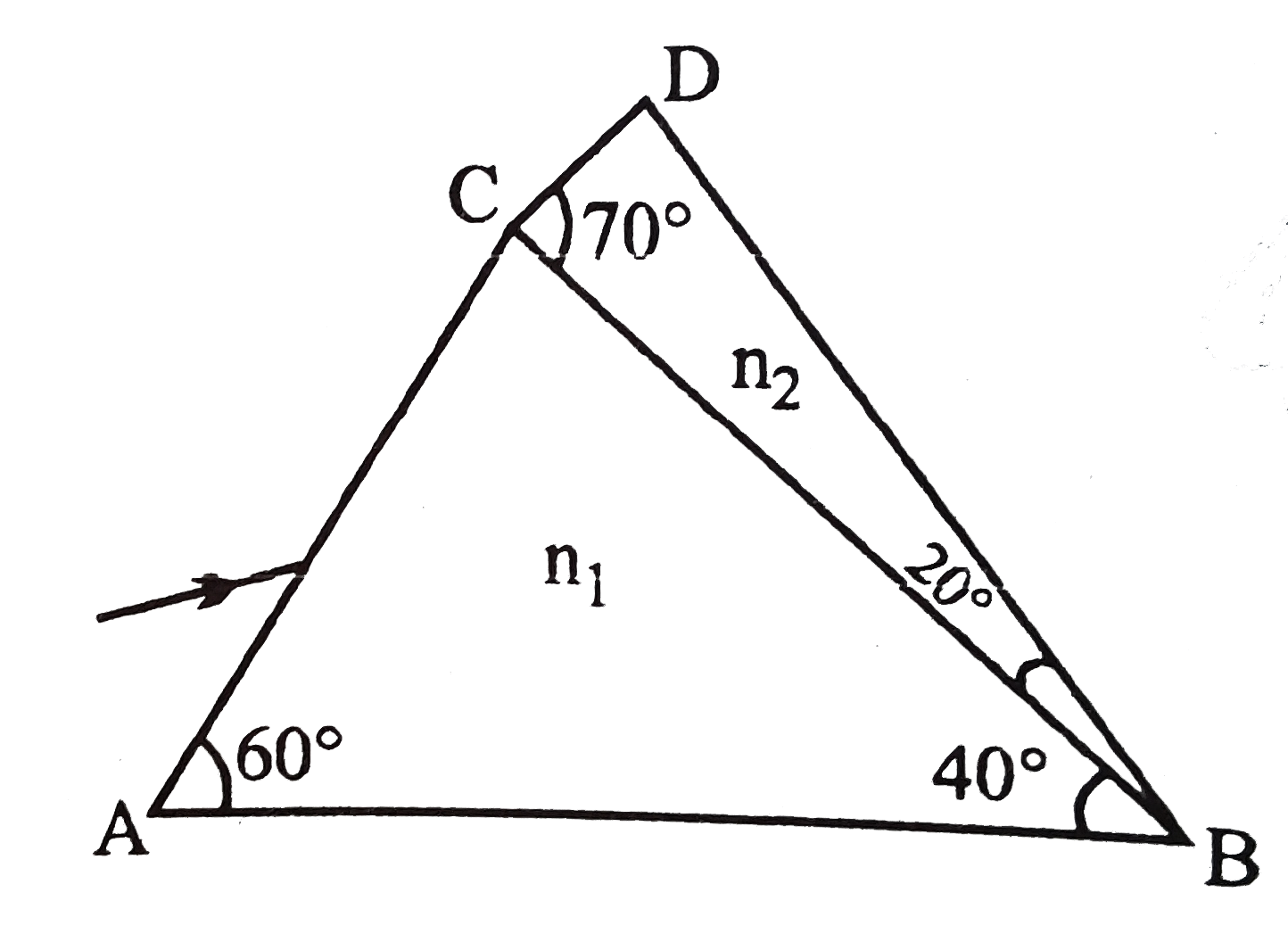
(i)Calculate the wavelength λ0for which rays incident at any angle on the interfaceBCpass through without bending at that interface.
(ii) for light of wavelength λ0,find the angle of incidencei on faceACsuch that the deviation produced by the combination of prism is minimum.
View SolutionA particle is moving in xy-plane .At certain instant the components of its velocity and acceleration are as follows ux=3m/s,uy=4m/s,ax=2m/s2anday=1m/s2. The rate of change of speed at this moment is
View SolutionThe motion of a planet around sun in an elliptical orbit is shown in the following figure. Sun is situated at one focus. The shaded areas are equal. If the planet takes time t_1 and l_2 in moving from A to B and from C to D respectively, then
View SolutionIn the picture below the planet orbits around the sun with a period of 40 months and takes 12 months to translate from the point D to point E and 1 month from point B to C. the area of the ellipse is A. mass of the satellite. Q. The area of the shaded region
View SolutionThe figure shows the elliptical orbit of a planet about the sun S. An ellipse is the curve obtained when a cone is cut by an inclined plane. It has two focal points. The sum of the distances to the two focal points from every point on the curve is constant. F1 and F2 are the two focal points of the ellipse . The shaded area CF1D is twice the shaded area AF1B.t1 is the time taken by the planet to move from C to D and t2 is the time to move from A to B
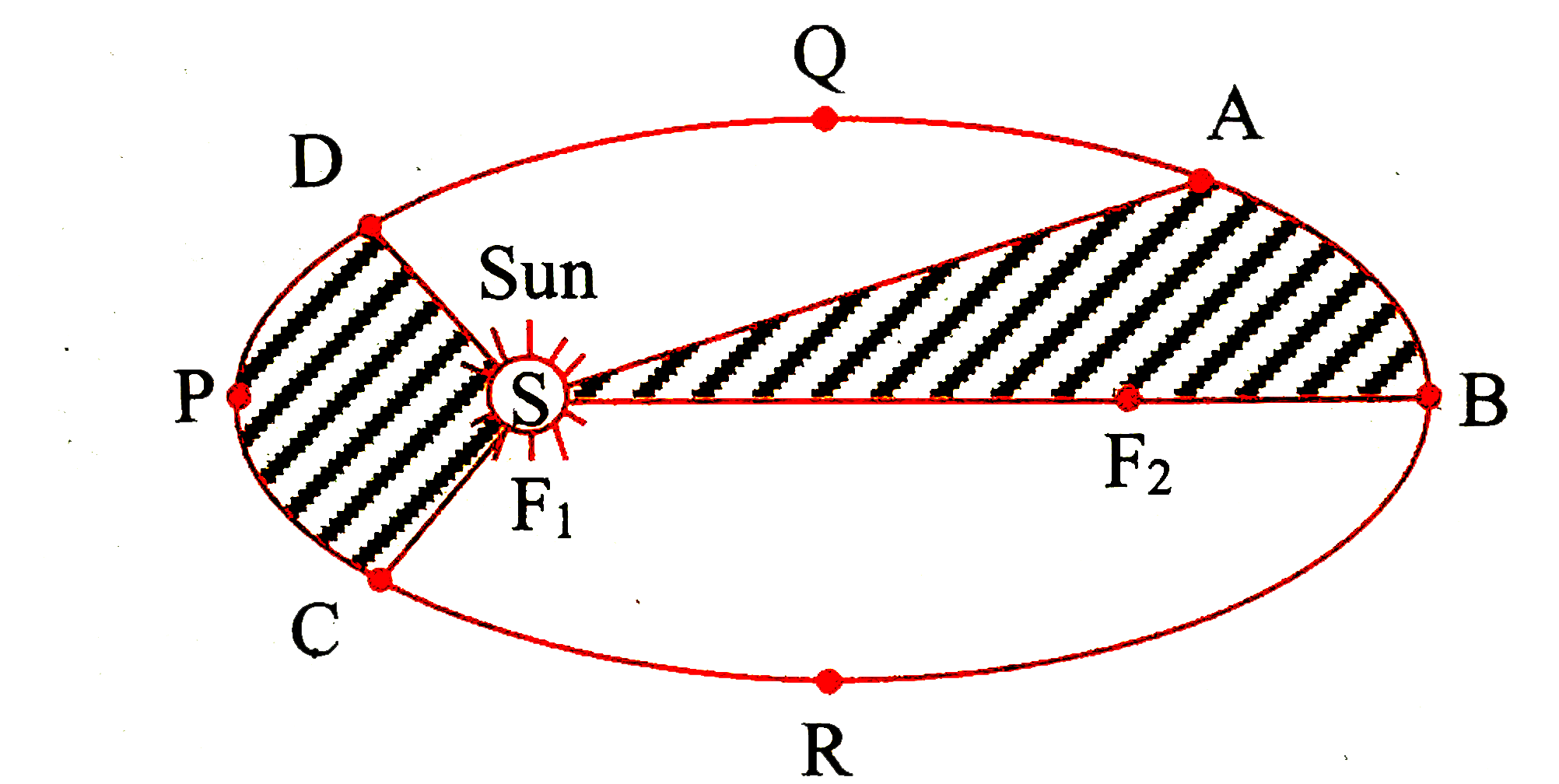
State the law regarding areas swept by the line joining the planet and the sun
View SolutionThe figure shows the elliptical orbit of a planet about the sun S. An ellipse is the curve obtained when a cone is cut by an inclined plane. It has two focal points. The sum of the distances to the two focal points from every point on the curve is constant. F1 and F2 are the two focal points of the ellipse . The shaded area CF1D is twice the shaded area AF1B.t1 is the time taken by the planet to move from C to D and t2 is the time to move from A to B
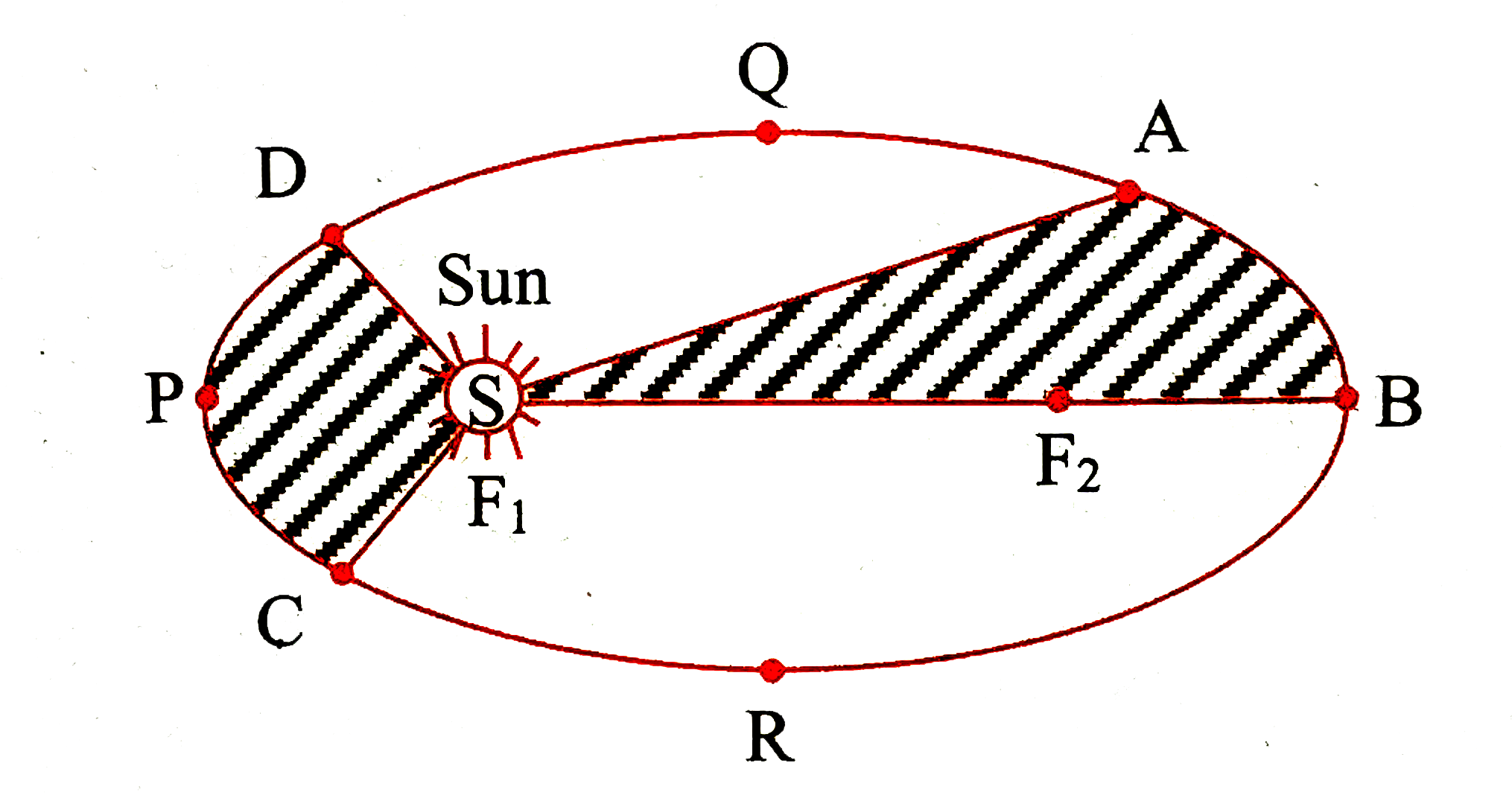
State the law regarding the time period of revolution of a planet .
View Solutionग्रह A की सूर्य से दूरी, ग्रह B की दूरी की तीन गुनी है | यदि B का परिक्रमण काल 6 महीने है, तो A का परिक्रमण काल ज्ञात कीजिए |
View Solutionचित्र में एक उपग्रह m की सूर्य S के चारों ओर दीर्घवृत्तीय कक्षा दिखाई गई है । छायांकित क्षेत्रफल SCD, छायांकित क्षेत्रफल SAB से दुगुना है । यदि C से D तक जाने में उपग्रह द्वारा लिया गया समय t1 तथा A से B तक जाने में समय t2 हो, तो -
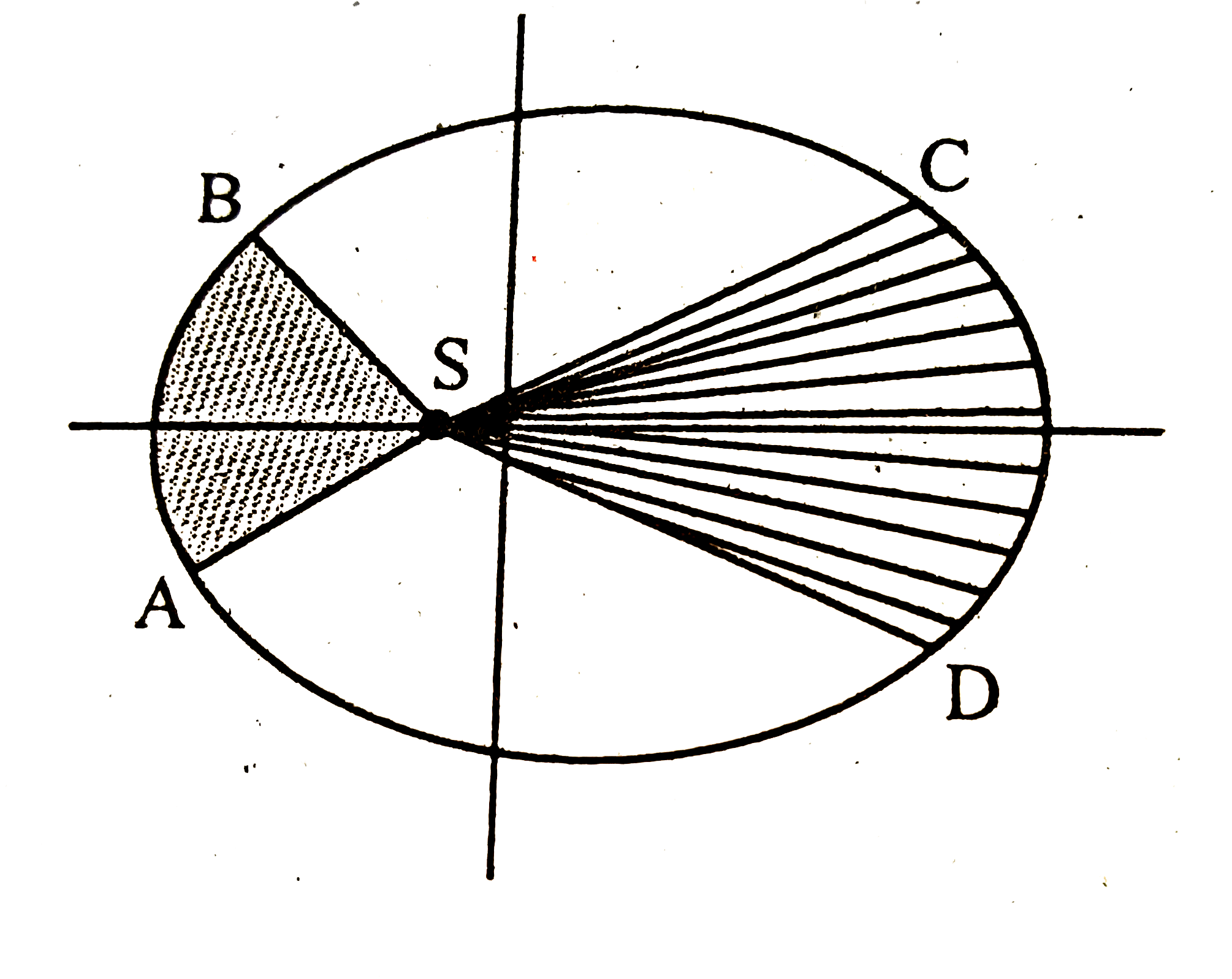
View Solutionसंलग्न चित्र सूर्य का चक्कर लगाते एक ग्रह का है । दीर्घवृत्तीय मार्ग के फोकस पर सूर्य है । यदि रेखांकित भाग का क्षेत्रफल समान हो तथा ग्रह द्वारा a से b तक एवं c से d तक जाने में लिए गये समय t1 व t2 हों तो -
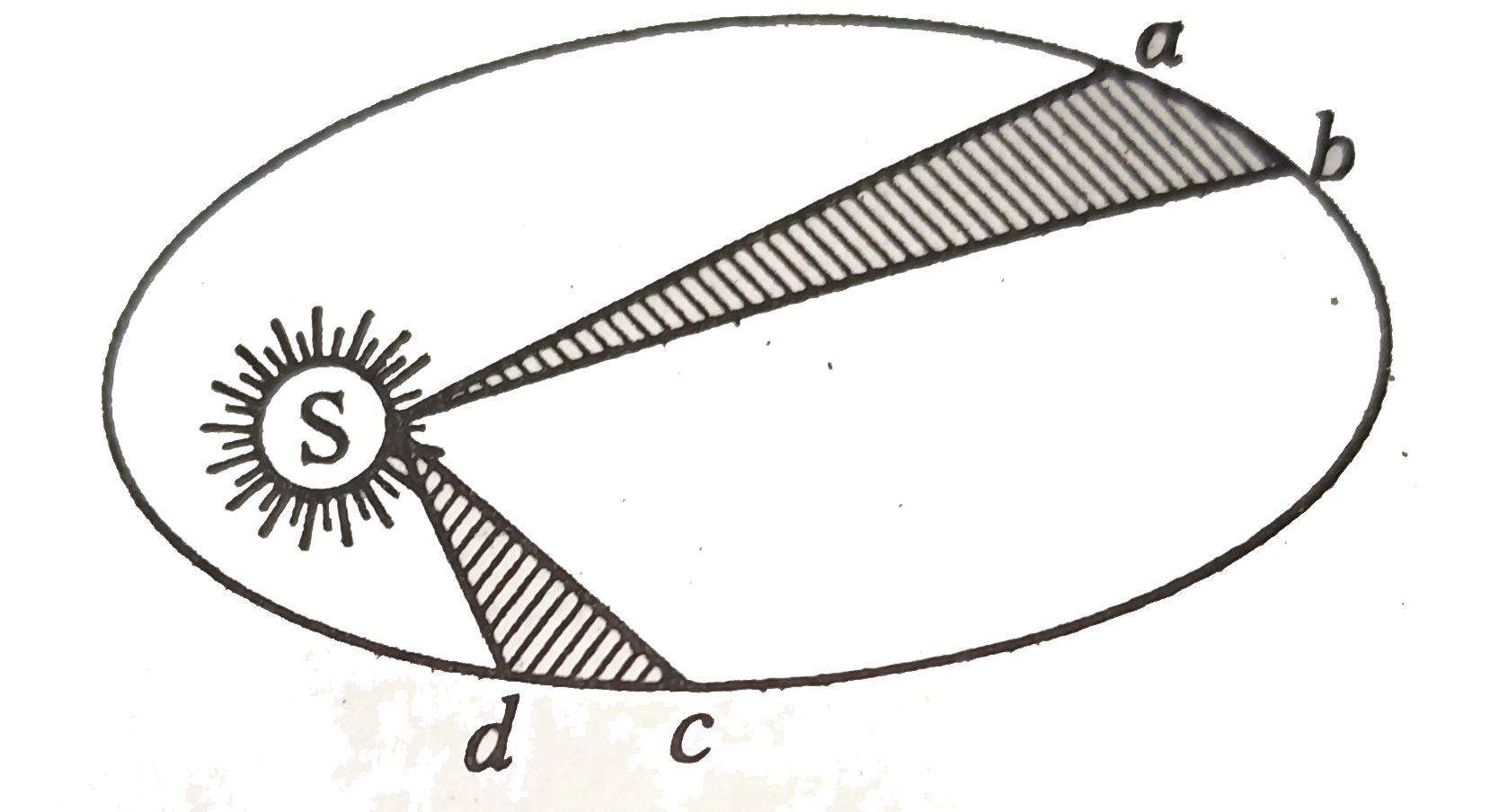
View SolutionShow that for planetary motion around the sun, the orbital velocity of a planet is maximum and minimum at the nearest and furthest point respectively from the sun.
View SolutionThe figure shows elliptical orbit of a planet m about the sun S. The shaded area SCD is twice the shaded are SAB. If t1 is the time for the planet to move from C to D and t2 is the time to move from A to B then ......

View SolutionAs shwon in figure , a planet revolves round the sun in Elliptical orbit the sun at the focus. The shaded area can be assumed to be equal. If t1 and t2 represent the time taken for the planet to move from A to B and C to D respectively, then
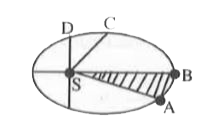
View SolutionA planet revolves around the sun in an elliptical orbit with the sun at one focus as shown in the figure. The shaded areas are equal. If t1andt2 are the times taken by the planet to move from a to b and from c to d, respectively, then ………….. .
View Solution
